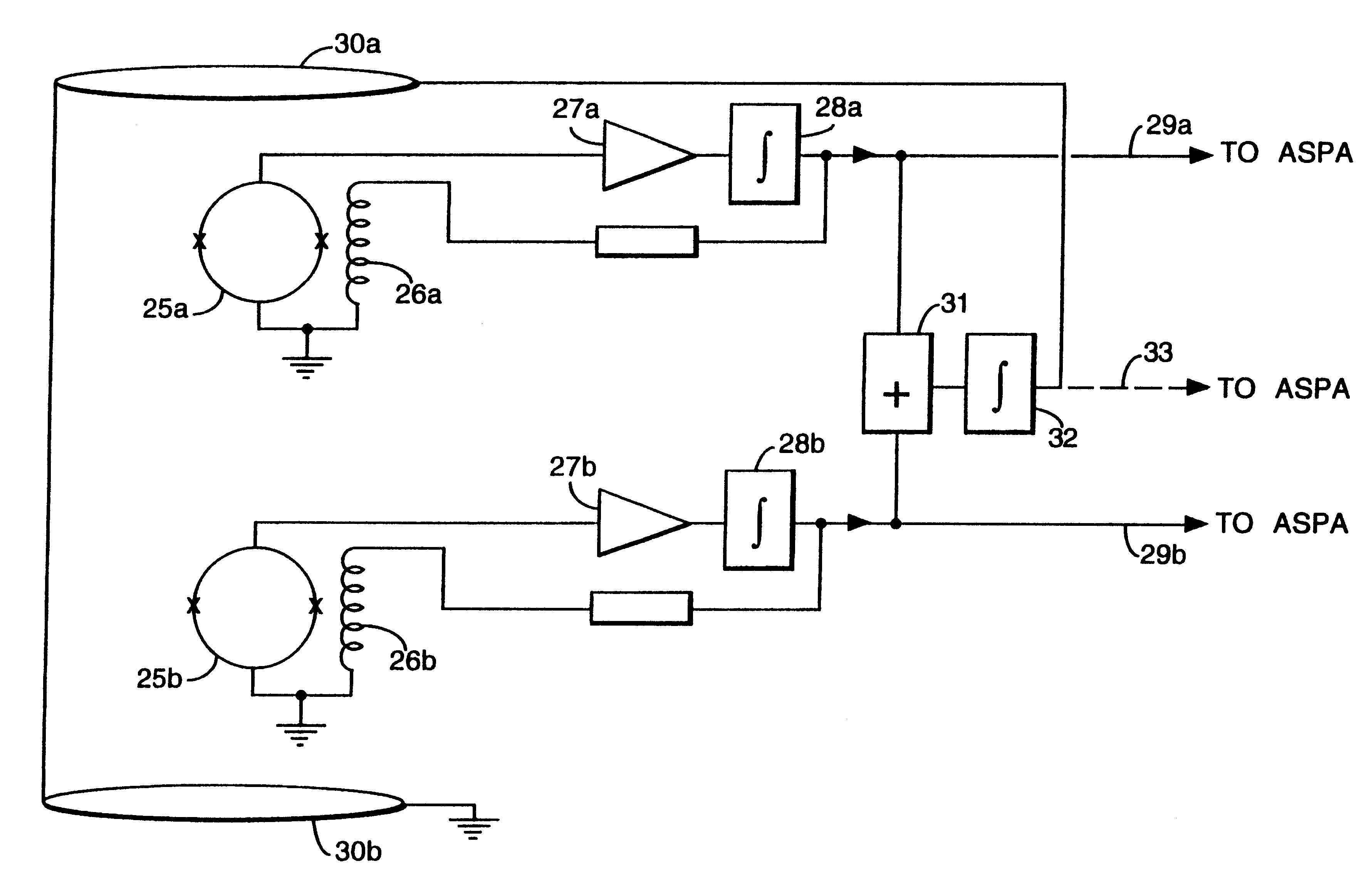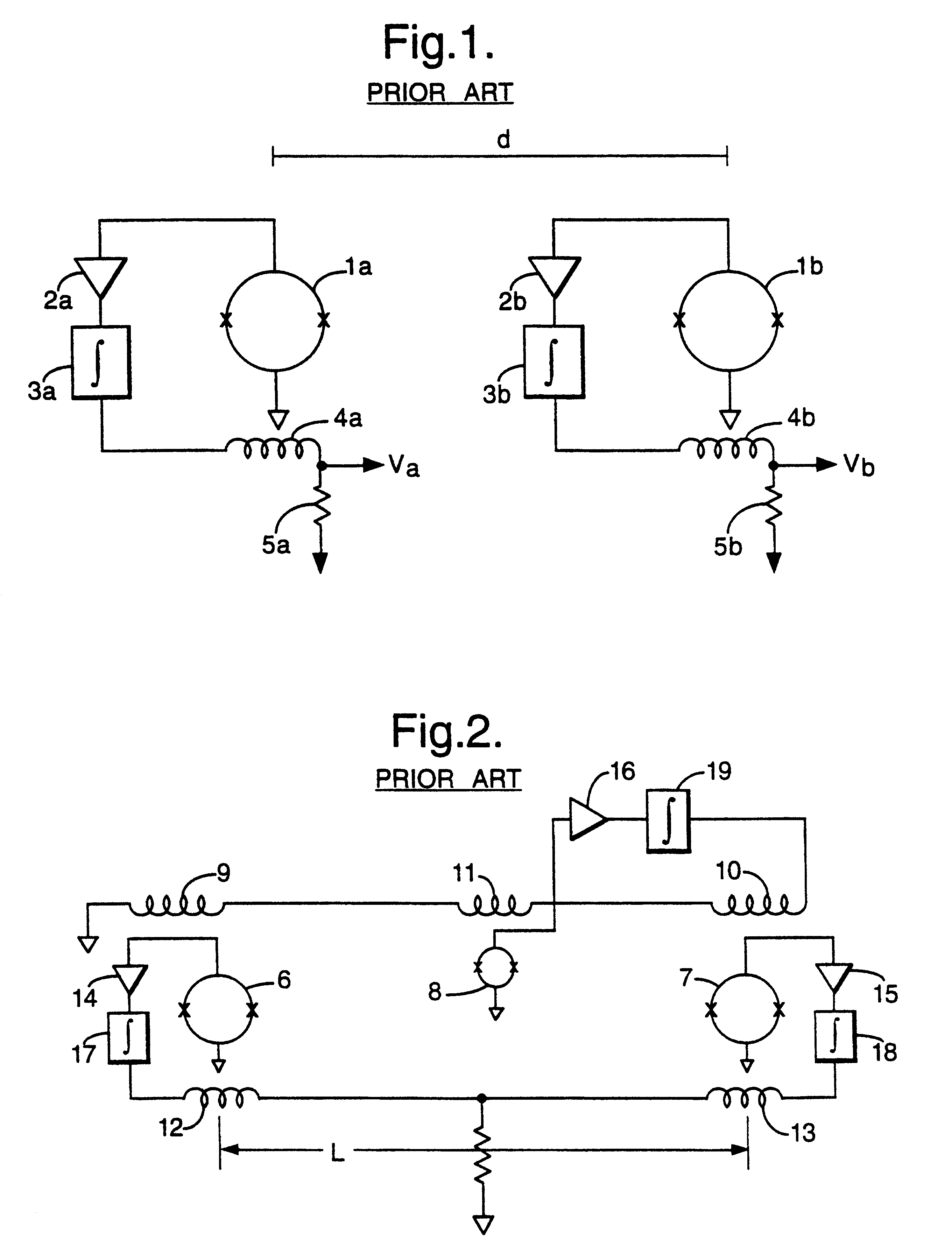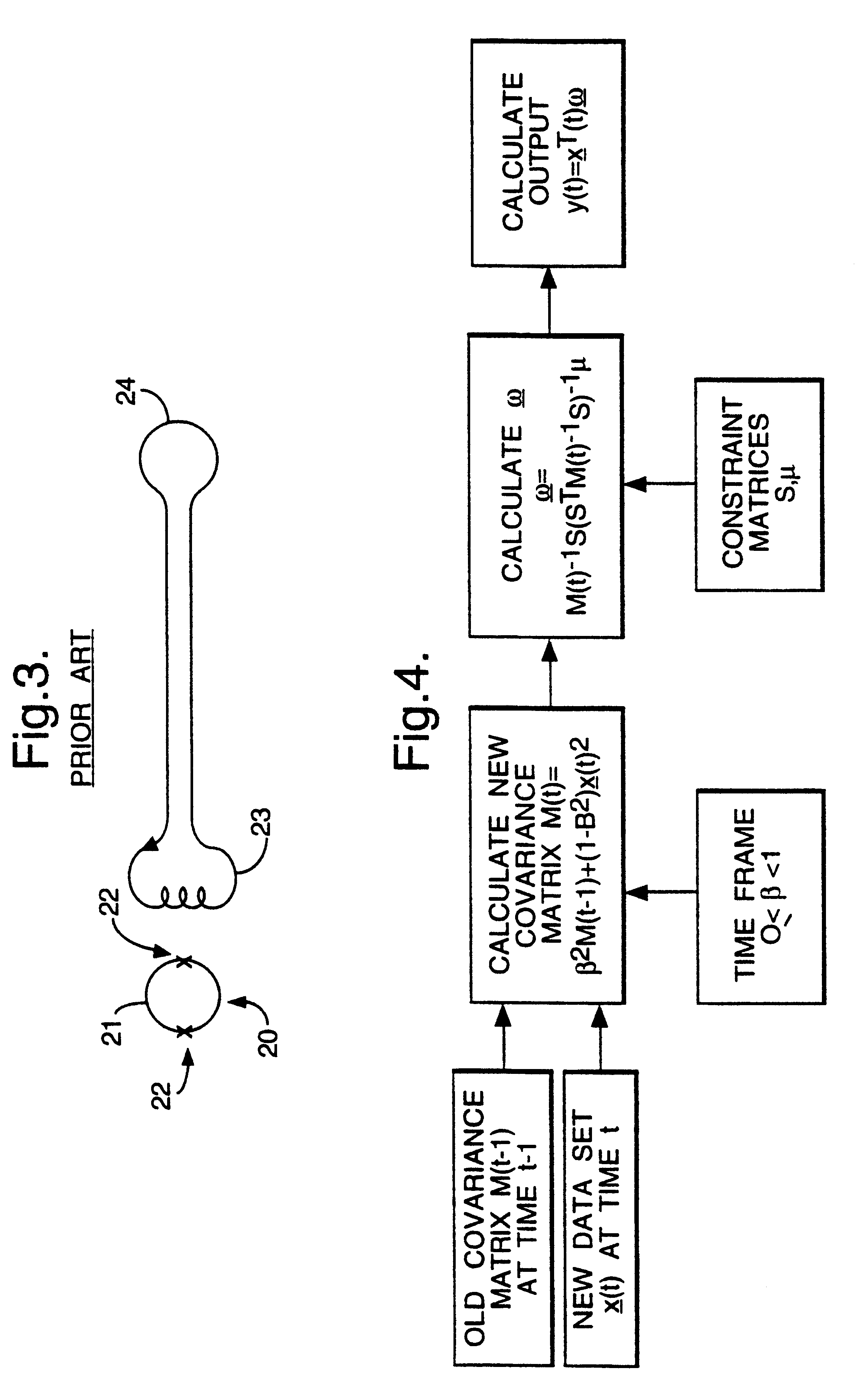Magnetic gradiometer incorporating global feedback
a global feedback and magnetic field technology, applied in the direction of three-component magnetometers, instruments, material magnetic variables, etc., can solve the problems of 1/f noise, difficult to measure the field near the threshold of sensitivity in the presence of earth's field, and expensive and time-consuming processes
- Summary
- Abstract
- Description
- Claims
- Application Information
AI Technical Summary
Benefits of technology
Problems solved by technology
Method used
Image
Examples
Embodiment Construction
Referring to FIG. 1, a conventional configured gradiometer for measuring the magnetic field gradient may comprise two magnetometers 1a, 1b, typically SQUID magnetometers, separated by a distance d (baseline distance), whereby each magnetometer 1a, 1b measures the magnetic field at its particular location. The gradiometer also comprises amplifiers 2a,2b and integrators 3a,3b, feedback coils 4a,4b and resistors 5a,5b, having the same resistance, for providing a correction current producing a field equal and opposite to that of the external magnetic field incident on the SQUIDs. Voltages Va, Vb are output from the device corresponding to the magnetic field at each of the SQUID magnetometers 1a, 1b respectively. The difference between the two voltages, Va-Vb, provides an approximation of the magnetic field gradient.
The two magnetometer gradiometer shown in FIG. 1 has a large common mode signal of the two SQUIDs, arising from the earth's magnetic field and requires an almost impossibly l...
PUM
 Login to View More
Login to View More Abstract
Description
Claims
Application Information
 Login to View More
Login to View More - R&D
- Intellectual Property
- Life Sciences
- Materials
- Tech Scout
- Unparalleled Data Quality
- Higher Quality Content
- 60% Fewer Hallucinations
Browse by: Latest US Patents, China's latest patents, Technical Efficacy Thesaurus, Application Domain, Technology Topic, Popular Technical Reports.
© 2025 PatSnap. All rights reserved.Legal|Privacy policy|Modern Slavery Act Transparency Statement|Sitemap|About US| Contact US: help@patsnap.com



